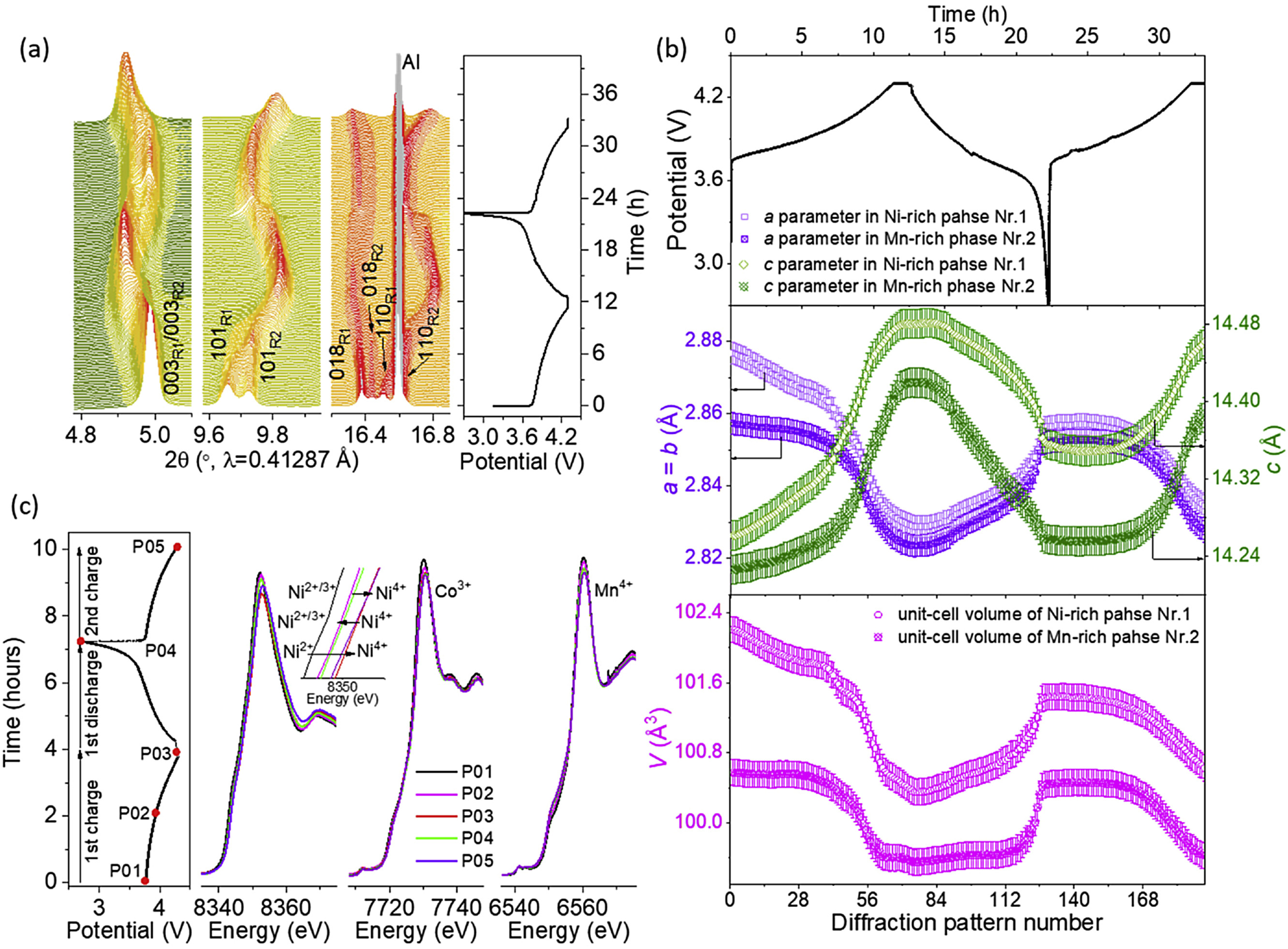ALBA Synchrotron

An international research group has developed a universal and facile synthetic strategy to synthesize a LiNixCoyMn1-x-yO2 (NCM) material for the lithium-ion batteries. The study provides new insights into the synergistic effect of core and shell during electrochemical cycling. These findings provide a new perspective for rational design of layered nickel-based cathode materials with high energy and long cycling life with particular two-phase electrochemical characteristics. Some of the data were obtained at the MSPD and CLAESS beamlines in the ALBA Synchrotron.

Figure. Schematic illustration of a subsequent (de)lithiation mechanism in the core-shell NCM cathode materials during the first cycle, showing an obvious change in the unit-cell volume of the Ni-rich phase within the interior region of a secondary particle with respect to the Mn-rich phase. TM: Ni – whitish; Mn – magenta; Co – blue.
LiNixCoyMn1-x-yO2 (NCM) intercalation compounds with core-shell architecture have been found to be promising cathode candidates for next-generation lithium-ion battery applications. The NCM cathodes functional properties are dependent on the transition metal relative ratios, making a challenge to control the real structure of core-shell NCM cathode materials and to understand the synergistic effect of core and shell during the electrochemical cycling.
This study provides new insights into the synergistic effect of the two layered phases in the core-shell morphology on the electrochemical performance of NCM cathode materials. These findings also offer a new perspective for rational design of layered Ni-based cathode materials with high energy and long cycling life with particular two phase electrochemical characteristics.
The core-shell material was synthesized by sequential co-precipitation of the transition metal hydroxides followed by reaction of the obtained precursor with lithium carbonate. The crystal structure of the pristine material was determined by simultaneous refinement of the synchrotron X-ray powder diffraction data- taken at the MSPD beamline in the ALBA Synchrotron - and neutron powder diffraction data - SPODI beamline at Neutron Research Source Heinz Maier (Leibnitz, Germany). The mechanism of the charge/discharge processes was analyzed using in situ synchrotron powder diffraction – also at the MSPD beamline in ALBA - and in situ X-ray absorption spectroscopy – at the CLAESS beamline in ALBA.
With the collaboration of Fundación Española para la Ciencia y la Tecnología. The ALBA Synchrotron is part of the of the of UCC network from the FECYT and has received support through the FCT-20-15798 project.